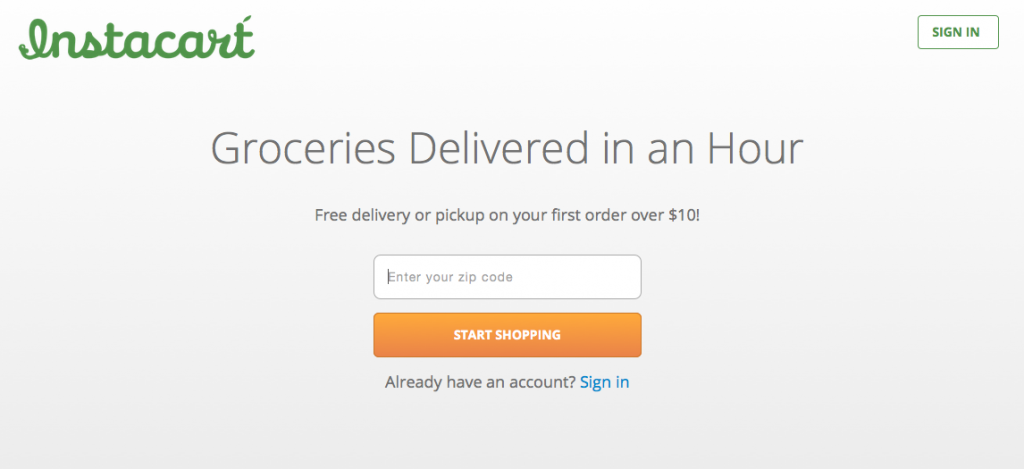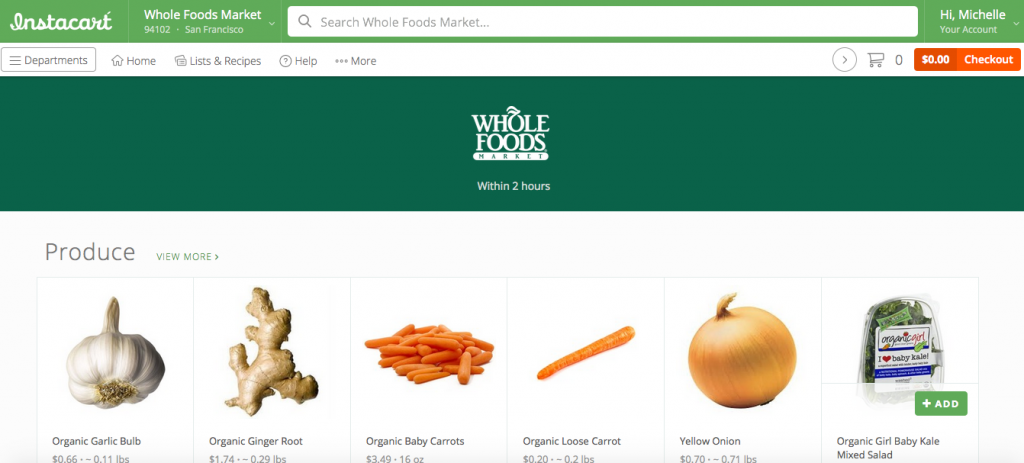While browsing the comments section of this recent CNN article, “Whole Foods is red hot again. Sales are surging,” I learned about a rap video that was published on YouTube in 2011:
It’s gettin’ real in the Whole Foods parking lot…
The rap song pokes fun at over-crowded Whole Foods stores where it’s nearly impossible to get a parking space. As of March 2015, the video has over 5.4 million views.
I instantly saw how Whole Foods could use this rap video (or something similar) as part of a creative marketing campaign to attract more customers.
Follow along with me here…Today I was reading about a startup company called Instacart, which delivers groceries to customers within 2 hours for $3.99 (or sooner if you pay a little more). Instacart has attracted $210 million from investors. It has partnered with nearly 50 grocery retailers, including – you guessed it – Whole Foods.
Now here’s what I would do: I’d use the aforementioned rap video to drive customers to Instacart’s website, where people in select cities can buy Whole Foods groceries and conveniently avoid the crowded parking lots.
At the end of the rap video, a call to action would be added such as “Avoid the crowded parking lots. Find out how you can get Whole Foods groceries delivered to your doorstep in 2 hours at instacart.com.” (There’s an entire sequence of steps that would need to go along with this, to make it work.)
Of course, I’m seeing wayyy into the future when Instacart actually has the capacity to serve more cities. As of right now, it only services a few cities. Their home page forces viewers to enter their zip code. If no service is available in that area, the page asks for an email address so the visitor can be notified when service becomes available.
I live in Colorado, and my city was not available. I used the San Francisco zip code 94102 to get into the system and take a peek at what it looks like from a customer’s point of view. I chose Whole Foods as my store and began looking through available items:
There’s a lot of potential here!
The point is that Whole Foods and Instacart would both benefit from a creative publicity stunt (i.e., marketing campaign) that leverages an already-viral creative piece, such as the rap video.
By poking fun at itself, and agreeing that “Yes, we know our parking lots are crowded – here’s the solution,” Whole Foods could attract a new segment of customers who detest shopping at over-crowded stores.
Because of its entertaining nature, the rap video would appeal to consumers who are at Level 2 (Aware but Apathetic), Level 3 (Curious), and Level 4 (Trying it out, but not committed).
Because the video is viral, it could also reach consumers at Level 1 (Unaware), thereby planting some seeds for them to move up to a higher level of awareness.
By taking creative risks in their marketing, similar to what I described above, Whole Foods could effectively reach customers who are at different levels of awareness.
As of right now, Whole Foods’ main customer base is college-educated people who are already sold on the idea of organic food. In order to reach people who are NOT YET sold on the value of organic, WF will need to get infinitely more creative in its marketing campaigns. This rap video is just one example of how they could achieve that objective.



 Michelle Lopez is a writer, editor, and copywriter with a BA in English/Creative Writing from the University of Colorado at Boulder.
Michelle Lopez is a writer, editor, and copywriter with a BA in English/Creative Writing from the University of Colorado at Boulder.